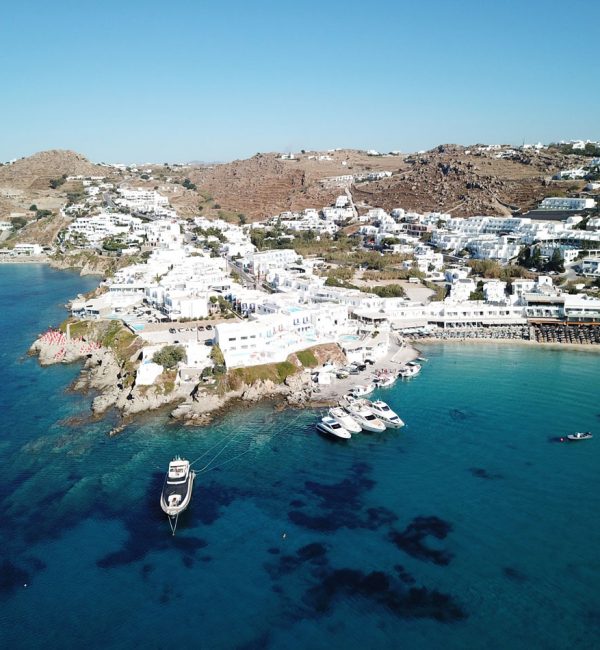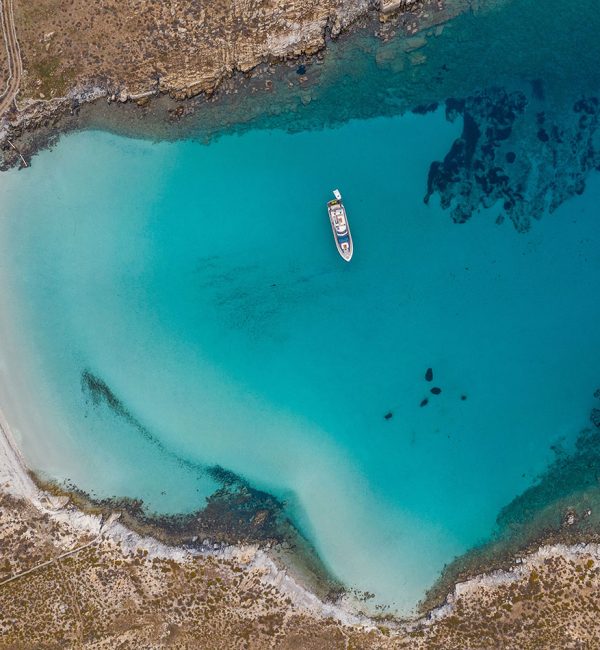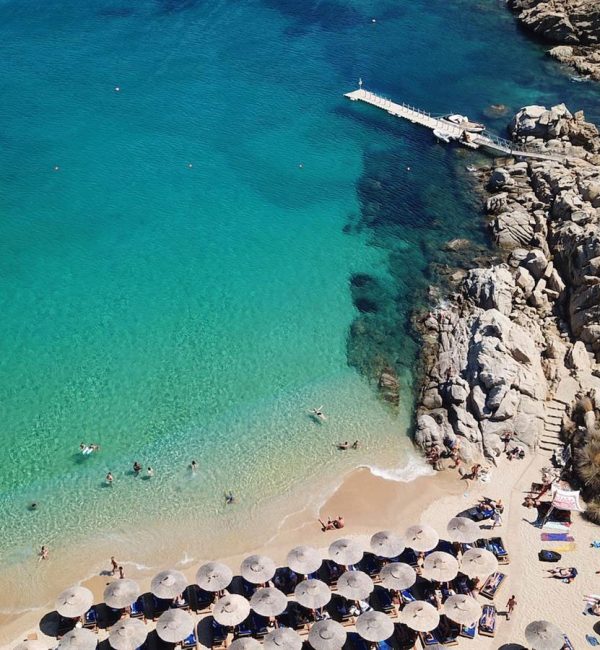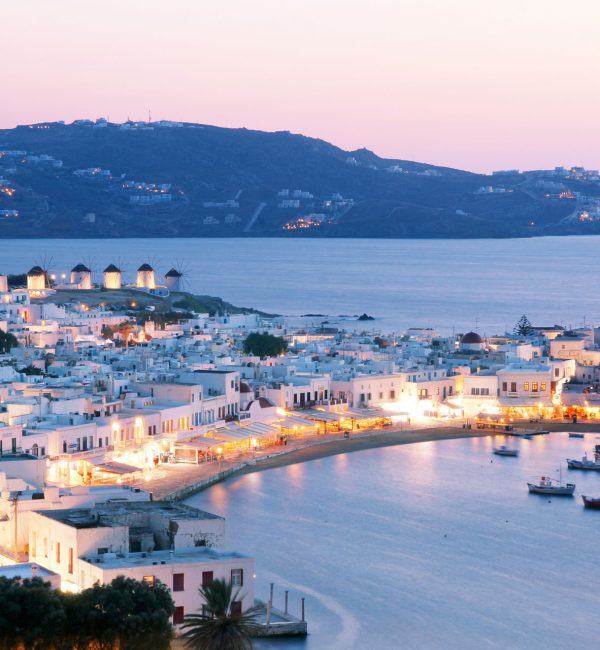Mykonos History
Mykonos has a rich history of over 3.000 years, from the ancient Greek mythology and the Byzantine till the Greek Revolution and World War II!
Mykonos from Mythology to the Bronze Age
With an area of 86.1 square kilometers, Mykonos, together with Delos, Rhenia and a few surrounding rocky islets, constitute a single island complex.
According to Greek mythology, there was once a violent clash between the Olympian Gods and the Giants. Myth has it that Hercules, an inevitable ally to the gods, came face to face with the Giants in Mykonos, where he buried them under huge rocks.
Mykonos’ rocky terrain with immense granite masses all over the island, truly seems like a battleground among giants. It is possible that the island’s name derives from the word mykon, meaning pile of stones or rocky place. According to another tradition, the “eponymous hero” of the island is Mykonos, the son of Anios who was the king of Delos at the time of the Trojan War and was himself the son of Apollo ad the nymph Roio. In Homer’s time, there is a reference of Mykonos in regards to the death and burial of the hero of the Trojan War, Ajax of Locris.
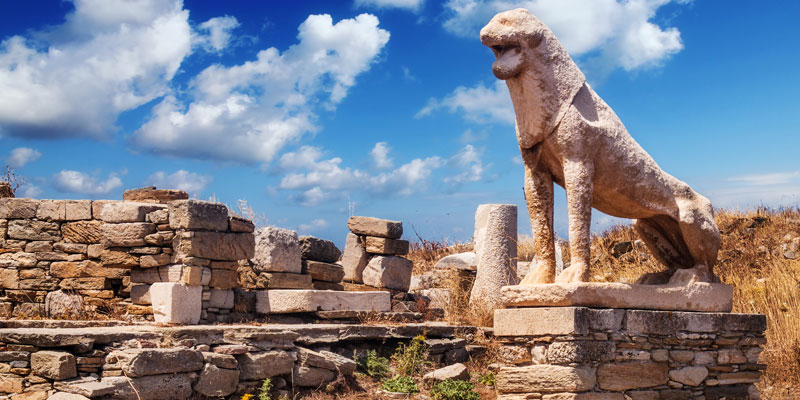
The Terrace of the Lions on Delos island
There are numerous significant testimonials and relics concerning prehistoric installations on Mykonos and the neighboring islands – Rhenia, Delos, and Stapodia. Excavations that took place around Ftelia brought to light finds from Neolithic settlement of the 5th millennium BC, proof that Mykonos was an important hub in the prehistoric era as well.
Legends say that Karias and Phoenicians were the first inhabitants of Mykonos. Ionians from Athens settled on the island around 1000 BC and prevailed, driving away from the earlier inhabitants.
Mykonos through the Iron Age
During the Archaic period (7th to 6th centuries BC), the ancient geographer Scylax of Caryanda points out Mykonos as dipolis, indicating the existence of two cities. The vase shards and buildings found at Paleokastro and the Kastro in Hora point out a continuous human presence and activity at these two locations.
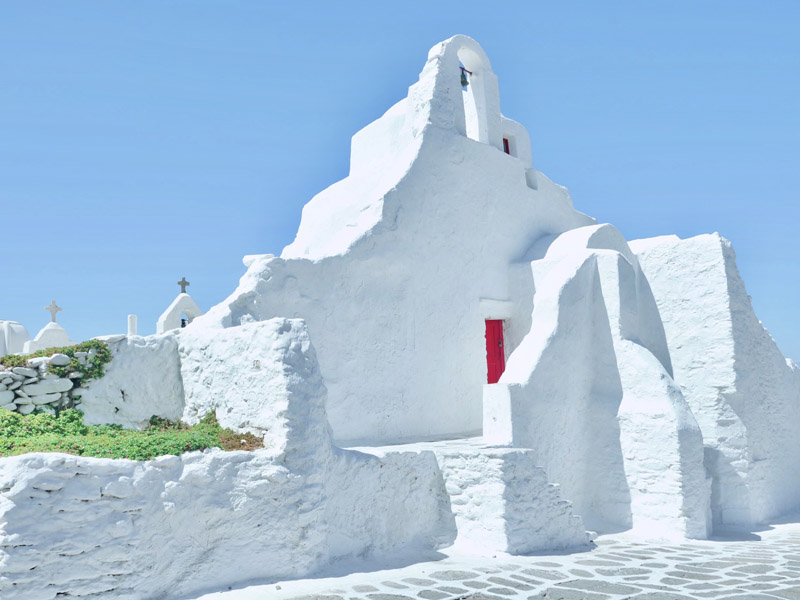
Churches, typical architecture of Cyclades
Mykonos emerged unscathed from the tribulations of the Persian Wars and was not pillaged as were the rest of the Cyclades, not only because the Persian considered Delos to be a sacred place, but also because the Mykonians submitted to the Persian conquerors. Following the Persian Wars, Mykonos acceded to the Athenian Alliance (478 BC). Large tracts of Mykonos belonged to the Sanctuary of Delos and were rented as farmland.
The destruction, in 69 BC, and the subsequent decline of the Sanctuary of Delos appears to have adversely affected Mykonos, but as far as the Roman and the Early Byzantine years are concerned, there is insufficient information concerning the state of the island.
During the Early Post-Christian period, many of the Cyclades has been severely depopulated or were being used as places of exile for prominent Romans who have fallen in disfavor.
Mykonos history through middle age
The settling of Saracens on Crete in AD 821 during the reign of Michael Travlos was a great impact on the Cyclades, which for many years hence, were suffering from pirate raids. During this period in Mykonos, there were many fortification works to protect the island from Arab pirates. According to history, Mykonos was a Byzantine possession until the late 12th century.
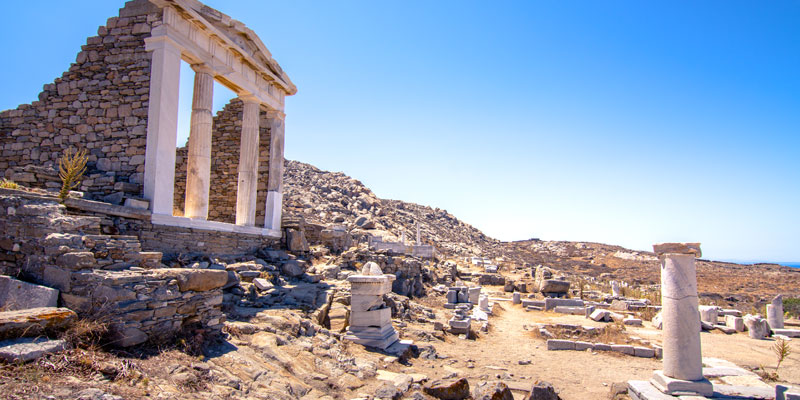
Ancient ruins in the island of Delos
During the reign of the Roman Empire, the island belonged to the Romans and later formed part of the great Byzantine Empire. The Byzantines protected Mykonos against the Arabs in the 7th century and controlled it until the 12th century.
When Constantinople fell at the end of the Fourth Crusade (1204), Mykonos was occupied by the Ghizi overlord, belonging to the extended family of Dandolo, the Doge of Venice. The Catalans were also for a short period of time on the island, ransacking it in the years around 1292, until the Venetians got it back in 1390.
Under Venetian domination in 1537, Mykonos saw many attacks by Barbarossa, the notorious admiral of Suleiman the Magnificent, and the Ottoman fleet gets on the island.
A situation of self-governing is imposed, supervised by Kapudan Pasha, the head of the Ottoman fleet, where a governor and a council of “syndics” are appointed, who always tried to keep a fair balance between the Venetians and Ottomans. The last Venetians withdrew definitively from the region in 1718, after the castle of Tinos fell in the hands of the Ottomans.
Mykonos history in the nineteenth century
During the Revolution of 1821, inspired by the island’s heroine, Mando Mavrogenous, the Mykonians zealously repulsed an attack by a squadron of the Turkish fleet and participated in the war of independence with four armed ships.
With the birth of the new Greek state, Mykonos witnessed the renaissance of a dynamic merchant class, which, through its ties to Greeks abroad, developed a flourishing trade.
However, the complete prevalence of steam technology in the late 19th century, the opening of the Corinth Canal (1893), and the economic crisis in the Kingdom of Greece in the 1890s brought about changes in the financial life of the island. That was when more and more Mykonians began to emigrate, even more during World War I and World War II.
Tourism as the answer to the local economy issue became apparent in the following decades, especially after the important excavations of the French School of Archeology began in Delos in 1873, bringing to light some very interesting findings.
As early as 1926, cruising ships brought wealthy travelers from all over the world to the sacred island. They came to visit the antiquities of Delos, but along the way they discovered and fell under the spell of the sparkling white, pristine, picturesque island of Mykonos and the smiling, openhearted, welcoming Mykonians. Mykonos soon became a cosmopolitan summer retreat, attracting countless visitors from across the world.
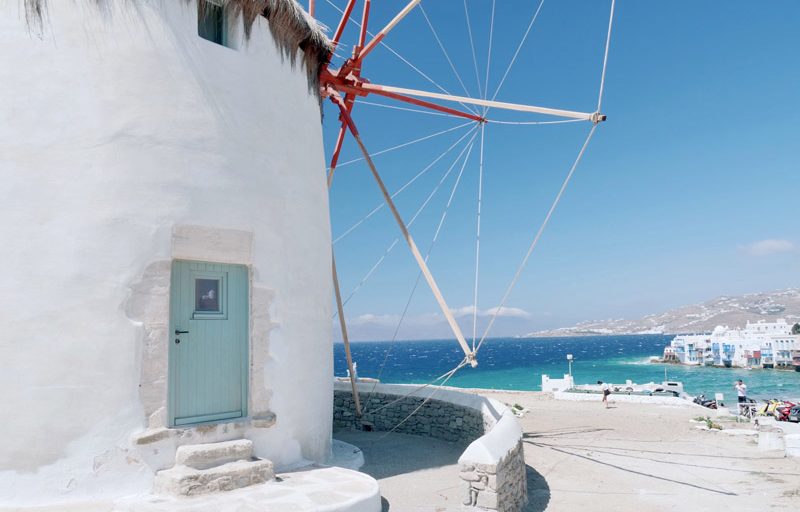
View to the Little Venice from the Windmills
In recent history and post-war years, against the backdrop of the rapid development of the tourist industry in Southern Europe, Mykonos successfully responded to the new demands. Thanks to the enterprise and the business acumen of its inhabitants, holds one of the most enviable positions in today’s international tourist market.

 Mykonos Yachting
Mykonos Yachting